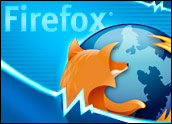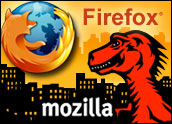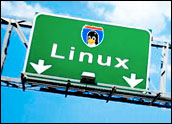
The concept of virtualization is set to take center stage at this week’s LinuxWorld conference in Boston. Among the competitive players are industry veterans Red Hat and Novell and startups XenSource and Virtual Iron.
Virtualization is a technique for deploying technologies. It allows multiple virtual operating systems to run on a single physical machine while maintaining distinct hardware profiles. In effect, the host operating system executes several guest operating systems.
Why so much virtualization hoopla? Partly because traditional X86 servers tend to run at 15 to 25 percent efficiency, according to Pund-IT Principal Analyst Charles King.
“Businesses might have been a little nervous about loading up multiple applications onto a single x86 server five years ago, but they can do it with a much clearer conscience and more comfort today than they ever did before because the hardware has become more robust and stable,” King told LinuxInsider.
Red Hat vs. Novell
Red Hat got the jump on the competition in March with the announcement of its integrated virtualization strategy. The company plans to work with AMD, Intel, Network Appliance and XenSource to make virtualization technology a mainstay of the Linux market this year.
Red Hat is developing tools, services and technology previews to allow its customers and partners to deploy computing resources at the lowest possible cost while maximizing the long-term use of each resource.
About a week after Red Hat’s announcement, Novell highlighted its own virtualization plans at its BrainShare conference. Those plans unfold with the latest edition of its SuSE Linux Enterprise software. SuSE Linux Enterprise 10 boasts virtualization enhancements, along with performance and management upgrades.
At the Center of Xen
Open source startups are also busy in the virtualization space. XenSource on Monday announced its first commercially packaged virtualization solution. Based on the open source Xen hypervisor, spun out from the University of Cambridge and developed and maintained by XenSource, XenEnterprise intends to virtualize servers running mainstream operating systems.
XenEnterprise leverages para-virtualization, which is the key innovation of Xen, together with microprocessor support for virtualization. It’s designed to allow customers to immediately realize the power of Intel Virtualization Technology and next-generation AMD Virtualization for server consolidation.
“By using XenEnterprise, organizations can clearly implement a virtualization platform resulting in increased server utilization, IT cost reduction and improved operational agility,” said Peter Levine, president and CEO of XenSource.
Virtual Iron’s Play
Virtual Iron on Monday followed suit with its own announcement, Version 3 of its product platform. It will combine Virtual Iron’s virtualization and policy-based management capabilities with the open source Xen hypervisor, and allow customers to run existing 32 and 64 bit Linux and Windows operating systems without modification.
“Virtual Iron is focused on delivering enterprise-class virtualization and management capabilities that exploit industry standard and open source economics,” said John Thibault, president and CEO of Virtual Iron.
VMware’s Move
Meanwhile, VMware on Monday announced that its virtual machine disk format specification for defining and formatting virtual machine environments is now openly available, downloadable and free of charge.
A virtual machine encapsulates an entire server or desktop environment in a file. The virtual machine disk format specification describes and documents the virtual machine environment and how it is stored.
“Encouraging the use of a common virtual machine disk format should lead to better interoperability across the industry. VMware’s initiative to open up its virtual machine disk format — a format that already is widely used in the industry — is an important development in the virtualization space and will benefit customers and ISVs alike,” said Al Gillen, research director of system software at IDC.
Changes Ahead
AMD and Intel have both announced on-chip virtualization tools for future servers, and analysts expect Red Hat and others to drive virtualization deep into the mainstream of open source.
“We are seeing sort of an open source love fest around virtualization between Novell and Red Hat and what’s going on with Xen and Virtual Iron,” King concluded. “If anybody was doubting the value of virtualization in IT platforms of any kind, the activities of the last year or so dispelled that misconception.”










































